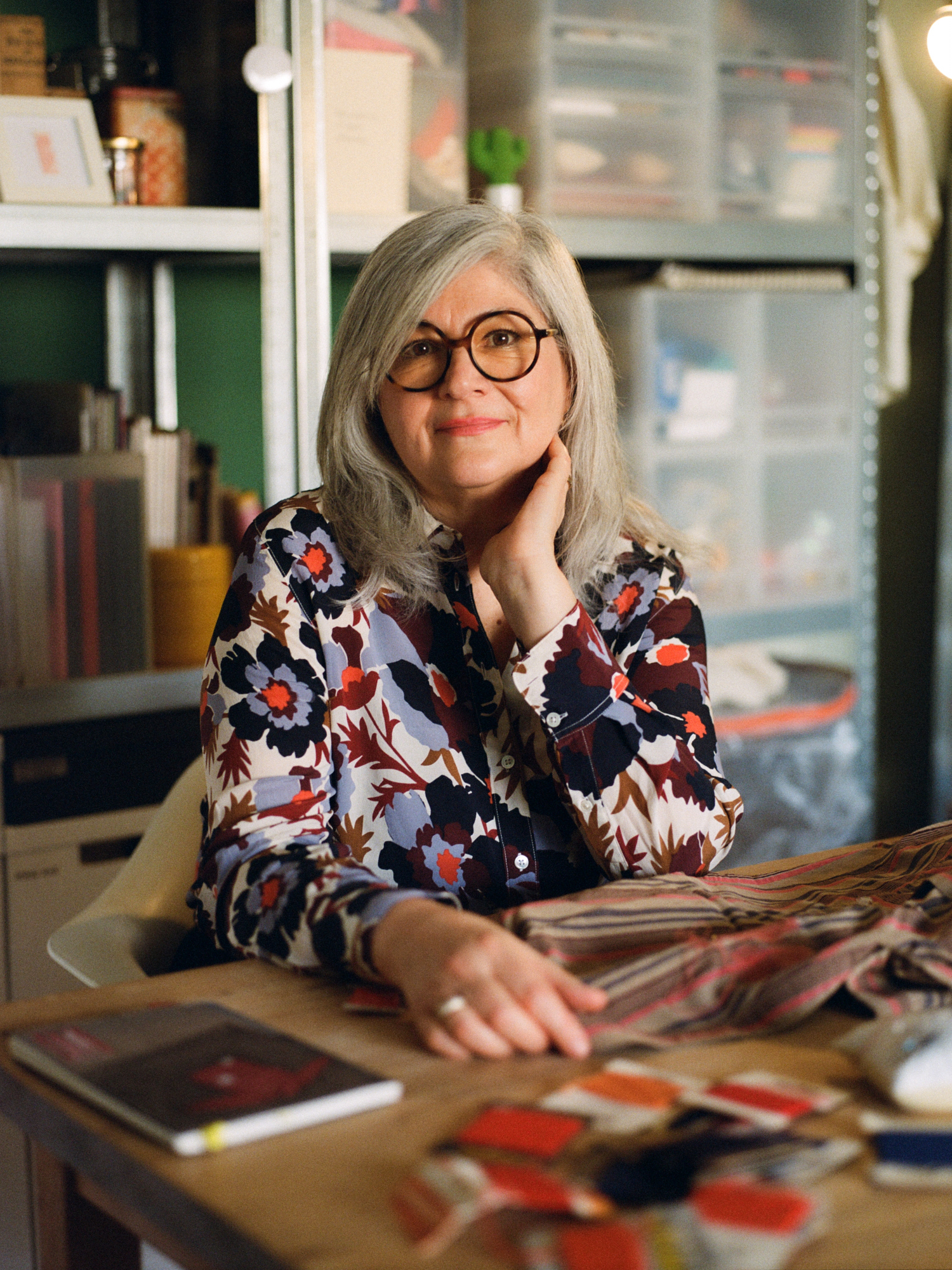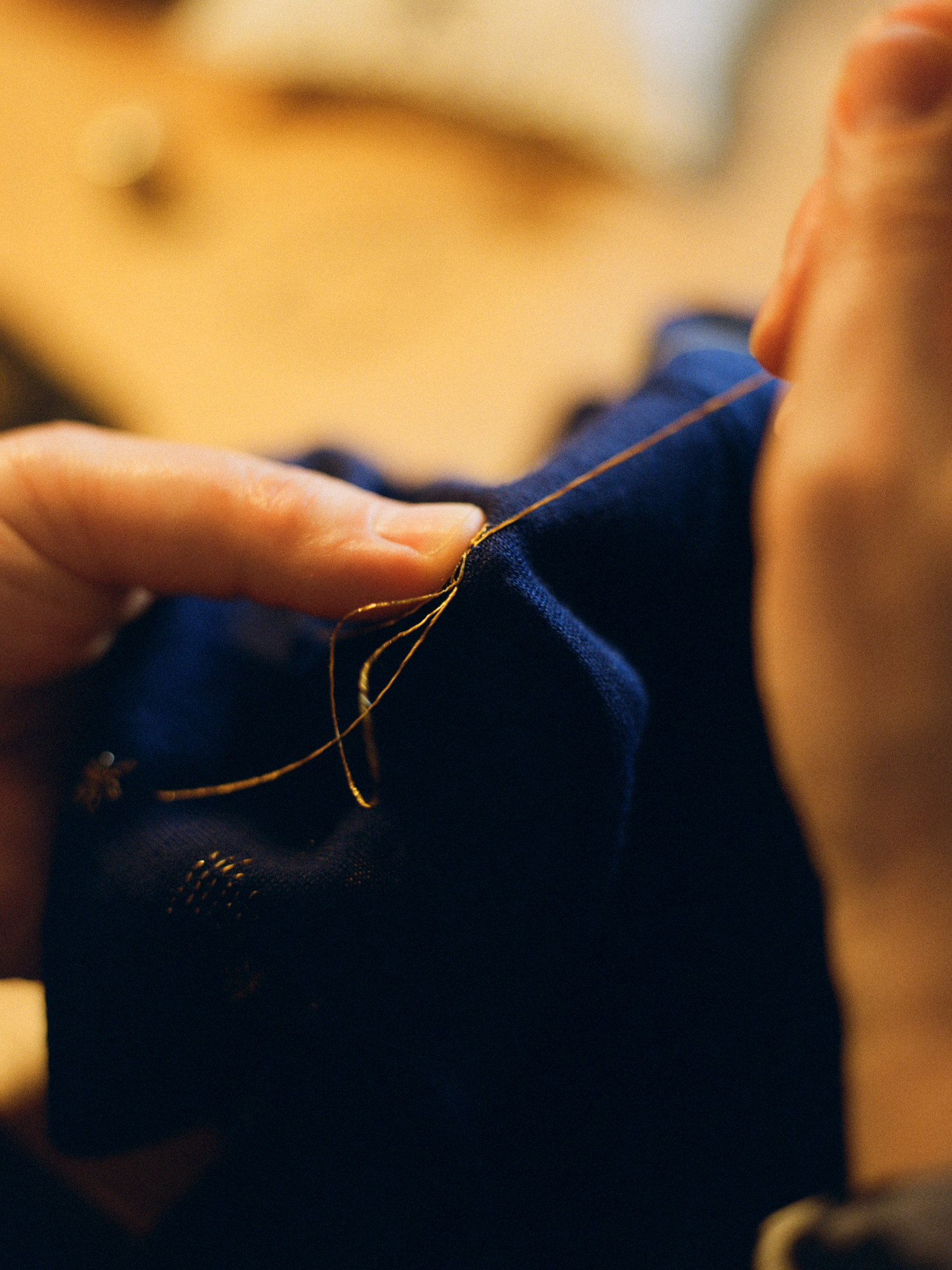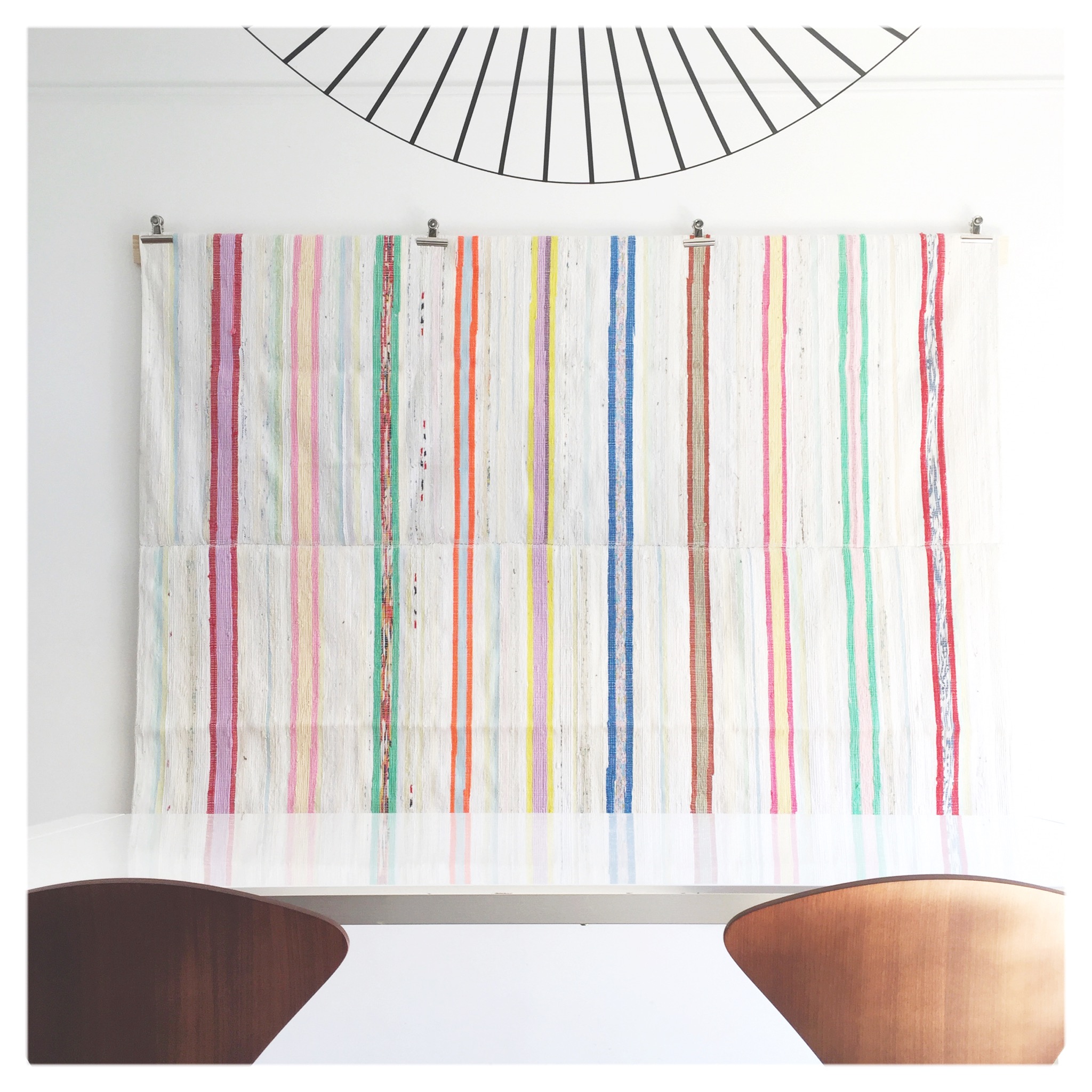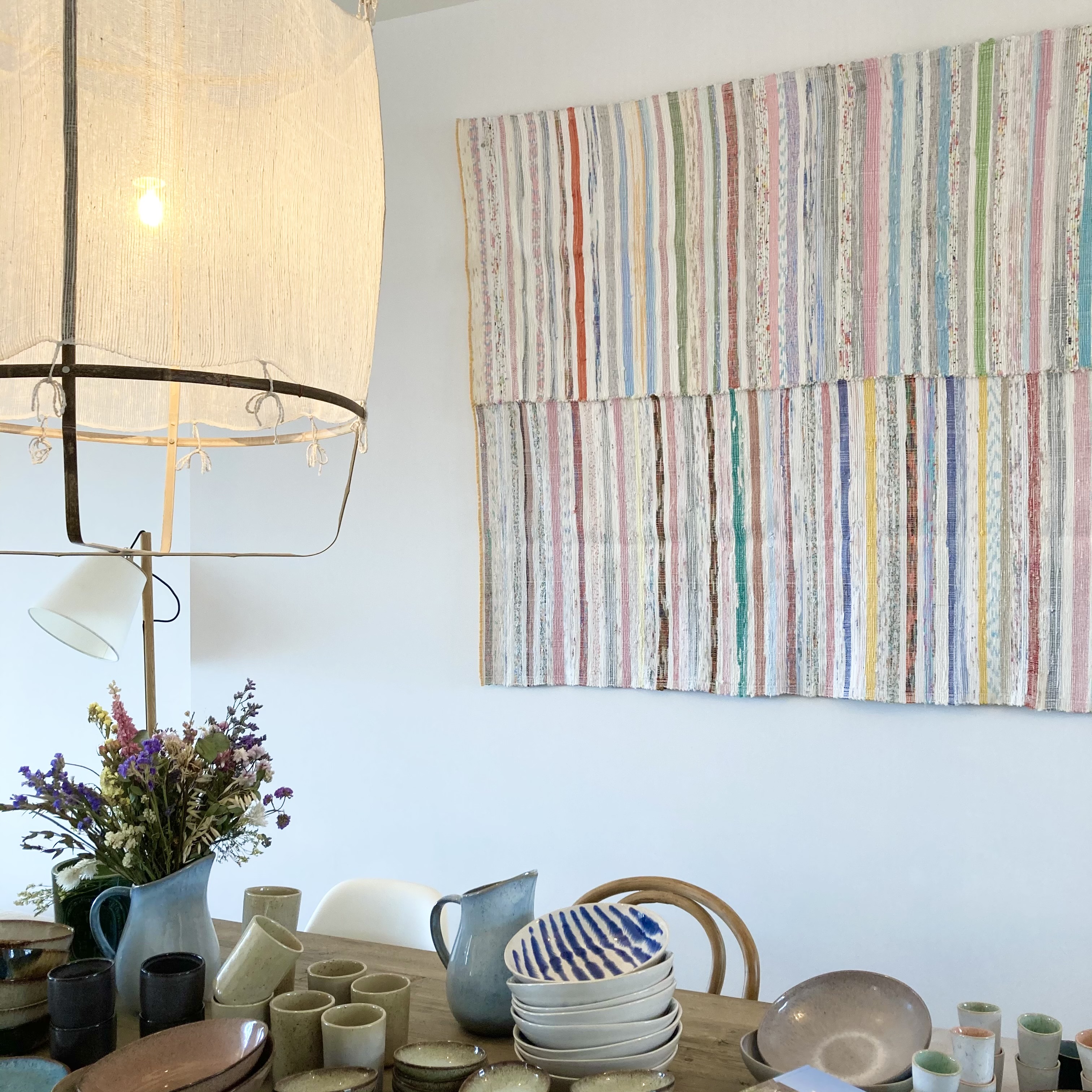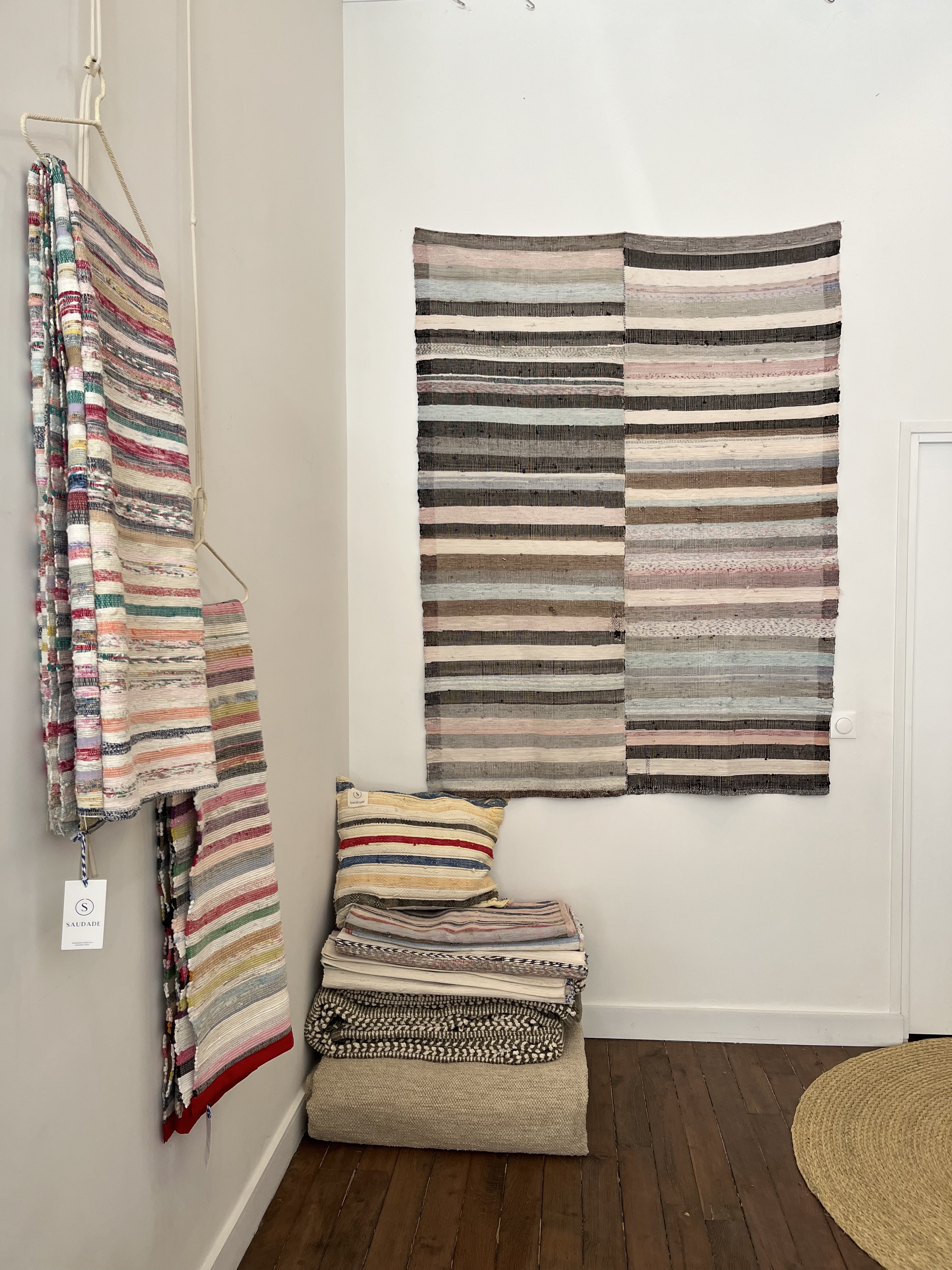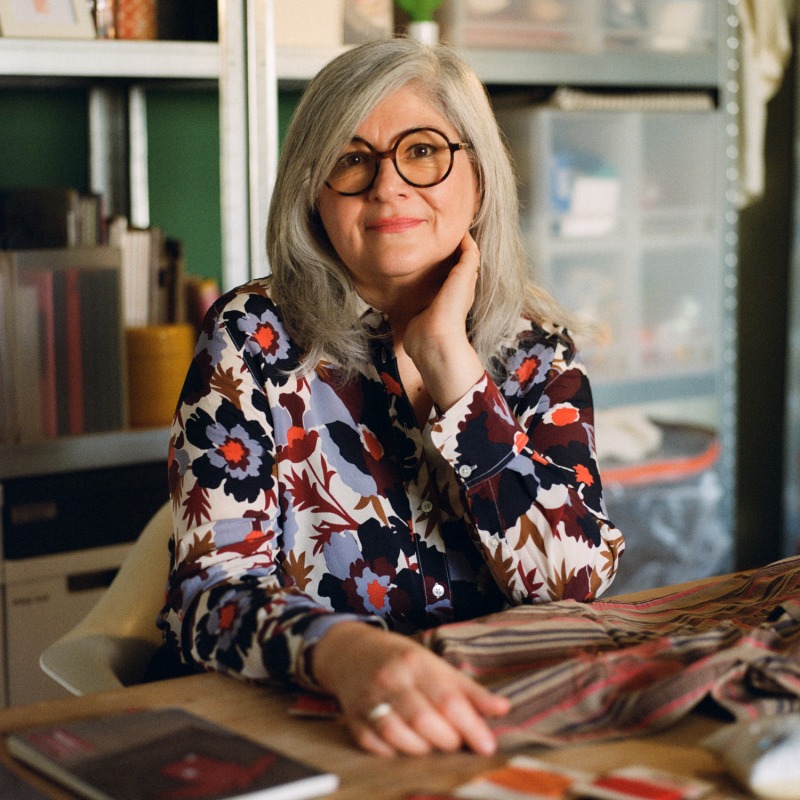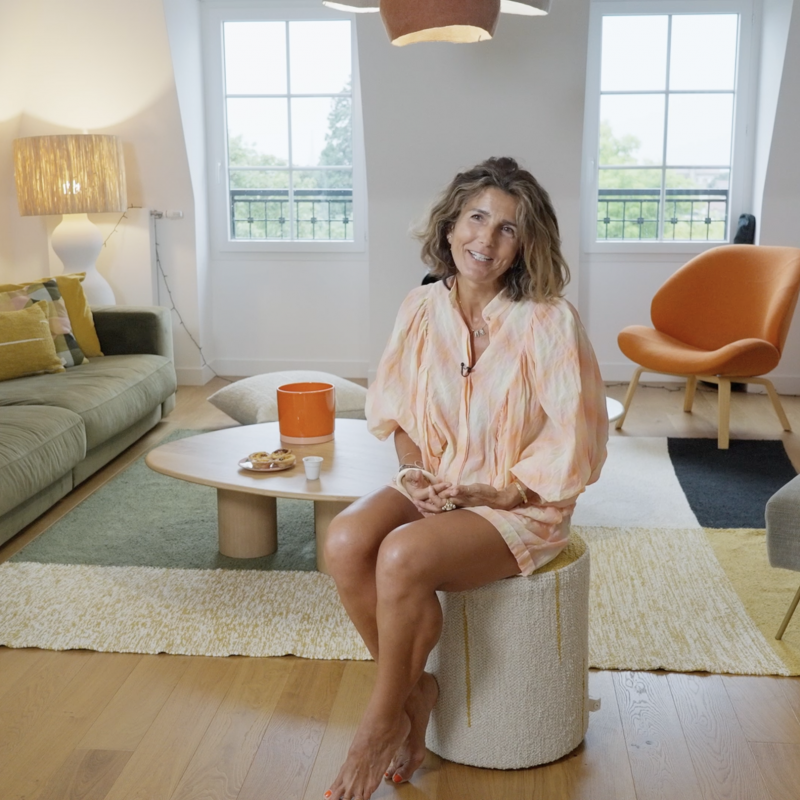Delivery is free*
for all orders over €200.
Working without a sewing machine means taking the time to do things slowly, and staying in direct contact with the material. It allows me to experiment freely, anywhere, without cost or the need for electricity — so it’s perfectly nomadic.
And besides, sewing machines are noisy — it’s not really ideal if you want to listen to music at the same time :)

